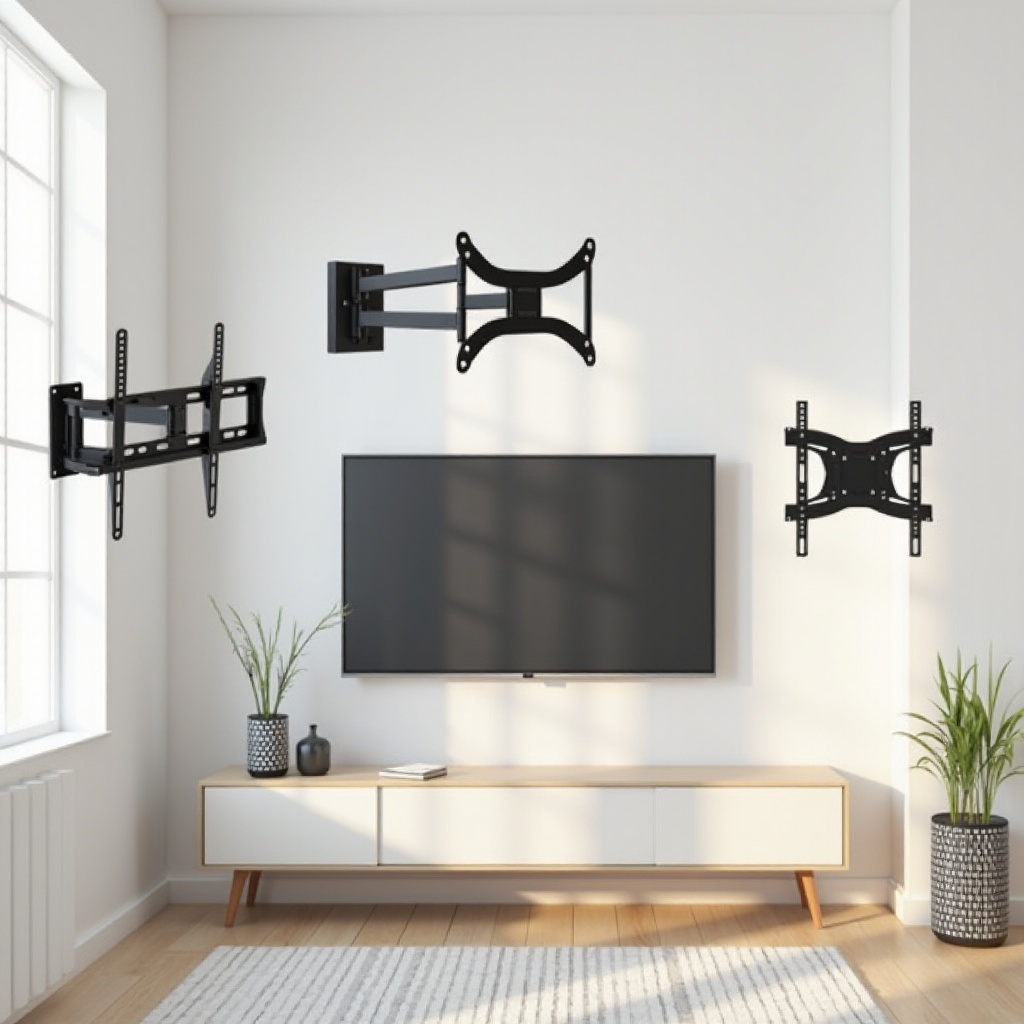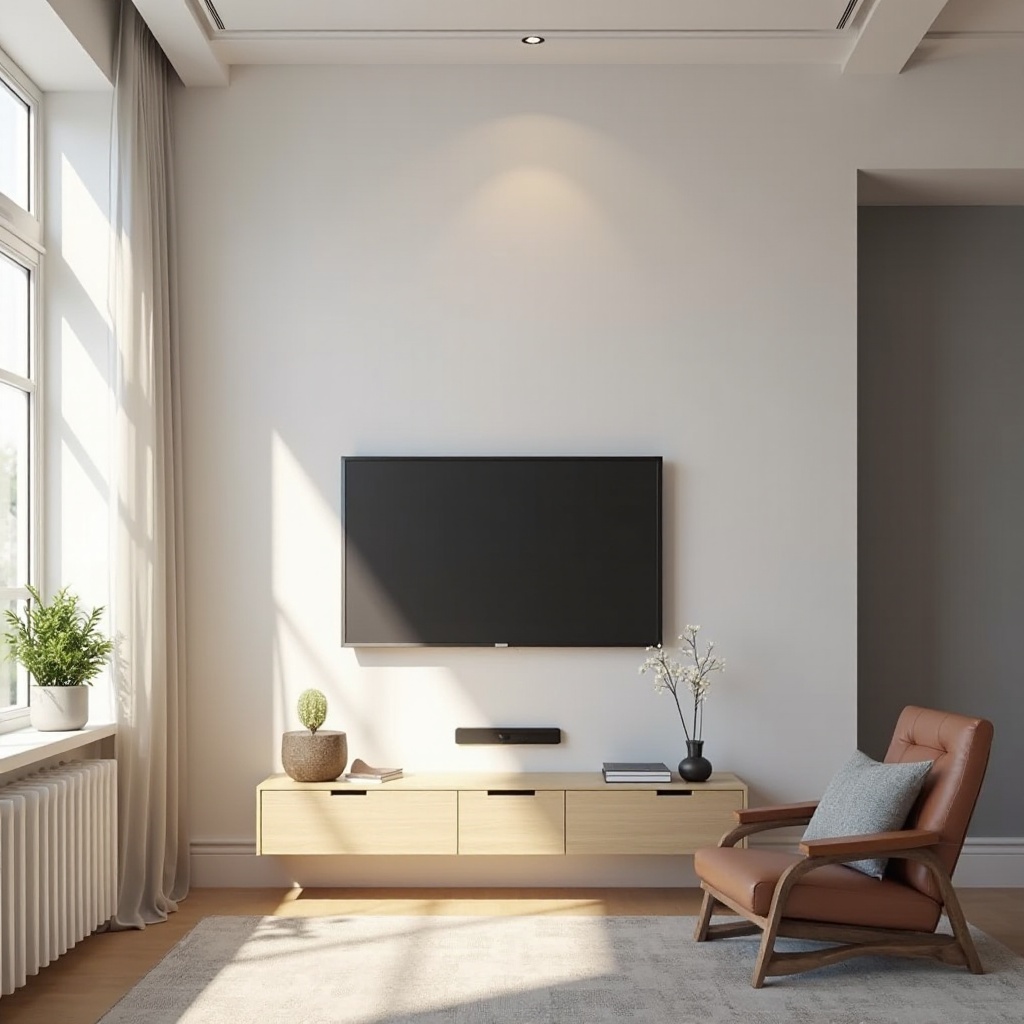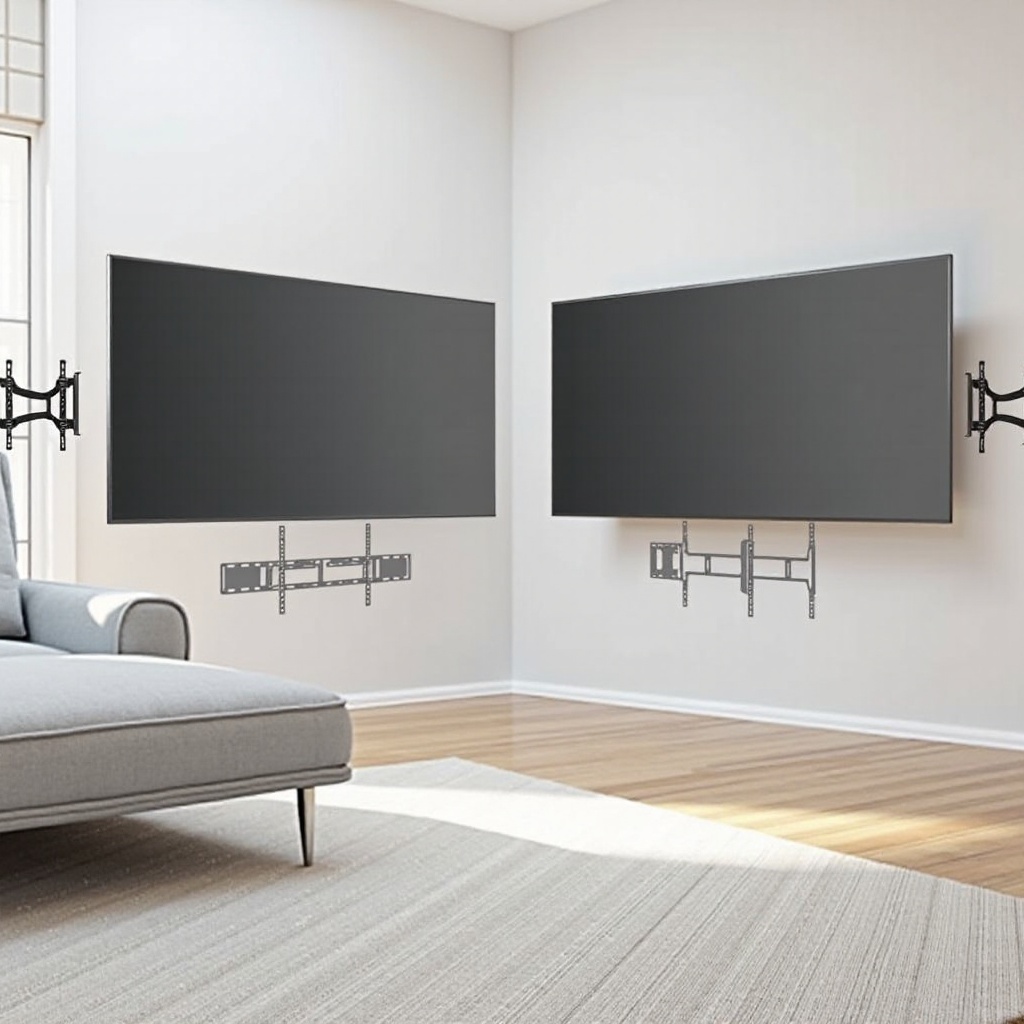Introduction
Choosing the right TV mount can revolutionize your home entertainment setup. Whether it’s freeing up space or achieving the perfect viewing angle, a well-chosen mount can enhance both aesthetics and functionality. Each type, with its own set of benefits, caters to different preferences and room layouts. Understanding these options is crucial in making an informed decision.

Overview of TV Mount Types
There are several types of TV mounts designed to meet diverse needs and enhance viewing experiences.
Fixed TV Mounts
Fixed mounts are a go-to option for simplicity and a sleek look. They hold the TV snugly to the wall, making them perfect for rooms where the seating area is centralized and the viewing angle is straightforward. These mounts provide notable stability but offer no adjustments.
Tilting TV Mounts
When combating glare, tilting mounts allow you to adjust the vertical angle of your TV. They’re perfect for installations above eye level, such as above a fireplace. While they protrude slightly more than fixed mounts, the ability to tilt enhances viewing comfort.
Full-Motion TV Mounts
Full-motion mounts offer unparalleled flexibility. Ideal for multi-angle viewing, they let you tilt, swivel, and extend the TV out from the wall. This versatility makes them suitable for large rooms with various seating arrangements.
Ceiling TV Mounts
Ceiling mounts cater to unique room layouts where traditional wall mounting isn’t an option. They offer full maneuverability, from swivels to tilt, ideal for expansive, open spaces or unconventional designs where wall mounting lacks practicality.
Under-Cabinet TV Mounts
In compact spaces like kitchens, under-cabinet mounts offer innovative solutions. These allow the TV to drop down when in use and tuck away neatly when not, preserving precious space.
Understanding each type’s offering will guide you in selecting a suitable mount tailored to your needs, leading us to factors critical for making your choice.

Key Considerations for Choosing a TV Mount
Making the right choice involves examining key aspects of the mount and your environment.
TV Size and Weight
Verify the mount supports your TV’s size and weight; incorrect pairing could risk safety. Specifications will detail supported dimensions and weight capacities, ensuring you avoid potential mounting issues.
Room Layout and Viewing Experience
Analyze the room’s layout. Consider positions where the TV will be watched most often. Fixed mounts favor central focal points, whereas full-motion options are excellent for varied setups.
Wall Type and Installation
Assess your wall’s capability to bear weight and the mount. Proper installation on drywall often necessitates additional support from studs or anchors. Ensure your mount is fit for the wall type to uphold safety.
These factors correspond directly with the variety of mounts, dictating installation tips we’ll explore next.
Installation Tips for Different TV Mounts
Properly installing your TV mount ensures safety and optimal function. Here’s how to do it right:
Installation Tools Needed
Equipping yourself with a drill, screwdrivers, level, and stud finder ensures accurate, safe installation regardless of your wall type, providing stability and precision.
Safety Measures
Follow these key safety tips:
– Always anchor your mount securely to a stud.
– Assemble the mount with care; check for all required parts.
– Enlist help to manage the TV when executing wall attachment.
Cable Management Solutions
Tidy up cords with these strategies:
– Use cable ties or concealers to organize cables neatly.
– Consider in-wall cord kits for an even cleaner finish, particularly useful with articulating mounts.
Installing correctly grants access to the full benefits of each mount type, which we’ll dive into shortly.
Advantages and Disadvantages of Each Mount Type
Each type offers unique benefits and potential setbacks.
Comparison of Fixed vs. Tilting
Fixed mounts provide a low-profile, straightforward solution. Cost-effective and easy to install, they lack adjustability. In contrast, tilting mounts mitigate glare and ease overhead installations but do occupy slightly more space.
Pros and Cons of Full-Motion
Full-motion mounts offer a dynamic range of motion, accommodating various seating areas. However, they can be pricey and more complex to install.
Specialized Uses for Ceiling and Under-Cabinet Mounts
Ceiling mounts are perfect for unique room configurations where walls aren’t ideal. They often require professional set-ups. For compact areas, under-cabinet mounts provide discreet deployment but limit post-installation movement.
Evaluating these benefits and drawbacks helps determine which mount best suits your environment, wrapping up our detailed analysis of TV mount types.

Conclusion
Evaluating the types of TV mounts and their special features ensures the best fit for your viewing experience. Prioritize room layout, TV specifications, and your viewing preferences to find a mount tailored to your needs. Each mount type offers distinct advantages, promising to elevate your entertainment settings.
Frequently Asked Questions
Can I mount a TV on any wall type?
Not all walls are suitable for TV mounts. You’ll need to check for support structures like studs, especially with drywall.
What is the best height to mount a TV?
The optimal height is typically at eye level from seated positions, around 42 inches from the floor.
How do I know if a TV mount is compatible with my TV?
Ensure the mount supports your TV’s size, weight, and VESA pattern by checking the specifications provided by the mount’s manufacturer.

